On View
How Can You Make an English Manor Filled With Old Masters Feel Contemporary? At Chatsworth House, the Answer Is Cutting-Edge Design
Glenn Adamson has created a dialogue between old and new at the Chatsworth House, opening March 18.
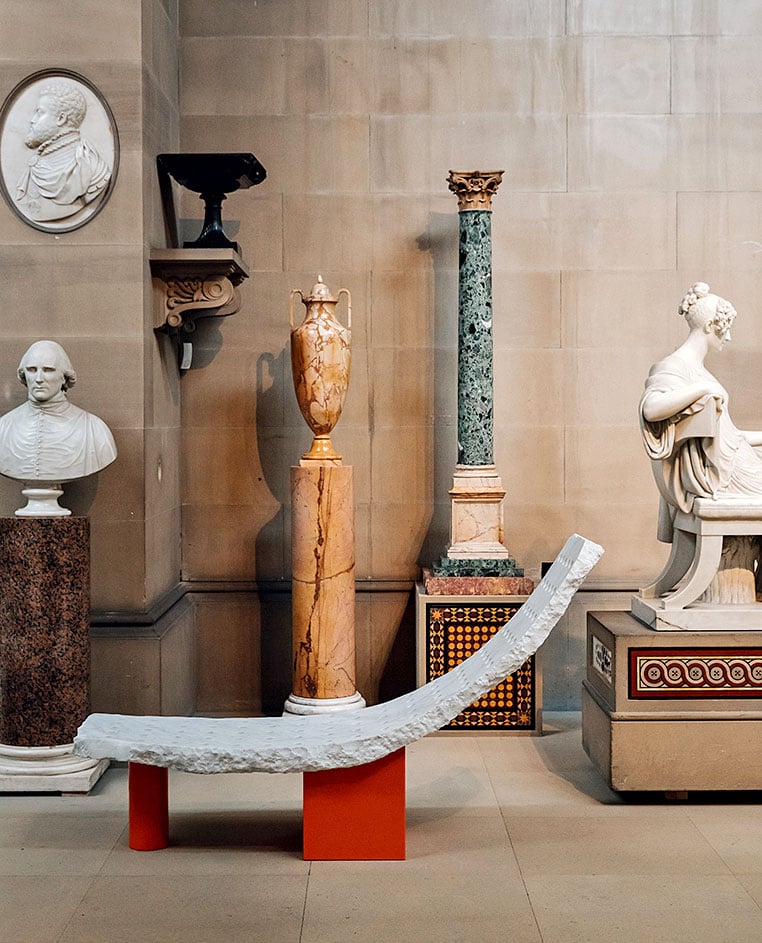
Glenn Adamson has created a dialogue between old and new at the Chatsworth House, opening March 18.

Adrian Madlener

Glenn Adamson has established himself as an authority on contemporary craft, with former positions as Head of Research at the Victoria and Albert Museum (V&A) in London and Director of New York’s Museum of Art and Design (MAD). Increasingly, the domain lends itself as much to fine art as it does collectible design, with Adamson positioned as a thought leader in both.
Adamson also writes books and essays, hosts panels, teaches and lectures, and consults widely. In the comprehensive compendium The Craft Reader (2010), the polymath synthesized the full breadth of craft theory. Fewer Better Things (2018) is Adamson’s ode to the objects in our homes that we imbue with personal narrative and value. He is currently at work on A Century of Tomorrows, a new book about the history of the future.
Hosted since 2020, his video series Design in Dialogue has covered topics ranging from 3D-printing to social housing and has featured designers such as Sheila Hicks, Stefan Sagmeister, and Jacques Herzog of architecture firm Herzog & de Meuron. At the core of his practice, however, is curation. While at the V&A, he helped mount “Postmodernism: Style and Subversion,” an extensive historical survey of the movement. At New York gallery Friedman Benda, Adamson guest-curated the “Static” exhibition of 2017, which analyzed the impetus behind Italian Radical Design in the 1970s and ‘80s.
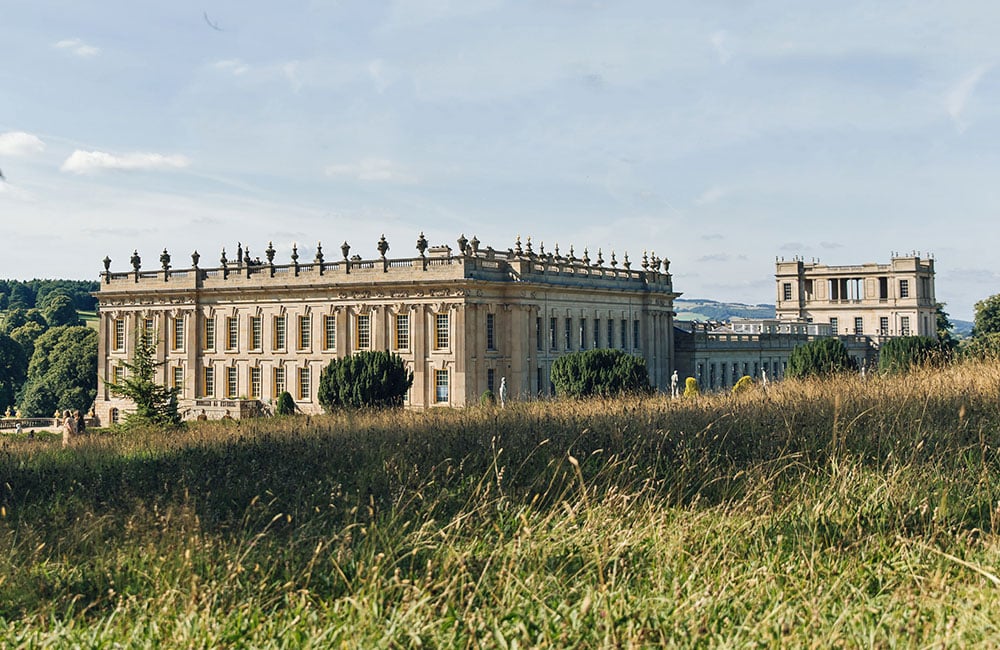
Chatsworth House
Now, Adamson has guest-curated “Mirror Mirror: Reflections on Design at Chatsworth,” working with Chatsworth’s senior curator of program, Alex Hodby, to strategically place contemporary design pieces in various rooms of the storied estate in central England, a museum in its own right. Joining forces again with the Friedman Benda, Adamson highlights a diverse group of 16 talents, ranging from Memphis Group founder Ettore Sottsass and contemporary master Michael Anastassiades to rising stars Najla El Zein and Fernando Laposse.
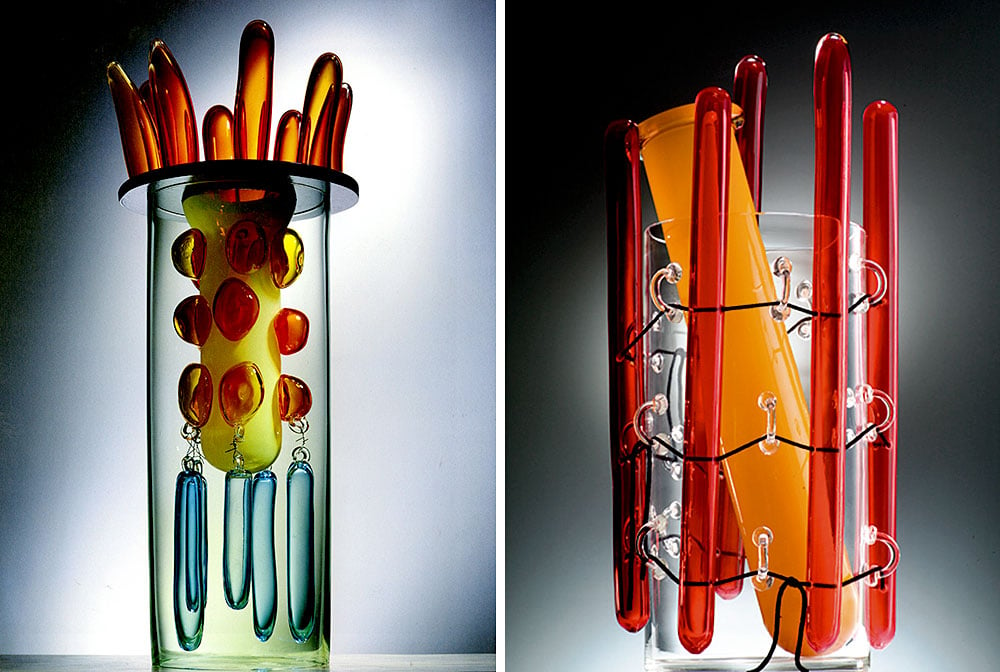
Glass works by Ettore Sottsass that appear in “Mirror Mirror.” Courtesy of Friedman Benda and Ettore Sottsass.
We spoke with the independent curator about the dynamic showcase (on view March 18 to October 1, 2023), delving into his perspectives on contemporary design, craft, collectible culture, and his own collecting practice.
What’s the concept behind the “Mirror Mirror” exhibition? What’s significant about the estate in both a historic and contemporary context?
The name of the exhibition obviously references the fairytale. Our concept was to create dialogues between contemporary work and the examples of historical art, architecture, and design already in place at Chatsworth and to uncover how one reflects the other. I did a Design in Dialogue talk with the current owner, Duke of Devonshire Peregrine Cavendish (“Stoker”) about his ceramics collection back in 2020, which sparked a longer, ongoing conversation. His family has a legacy of commissioning new art and design for the primarily Baroque-style property specific to their time, fostering what’s cutting-edge from an aesthetic and technical standpoint. One has only to think of the estate’s 1730 William Kent armchairs that represent the latest artisanal innovations of the time. Joseph Paxton’s 1832 Chatsworth Greenhouse was groundbreaking at the time and set the standard for the typology. The Cavendishes have kept up this practice of patronage to the present day.
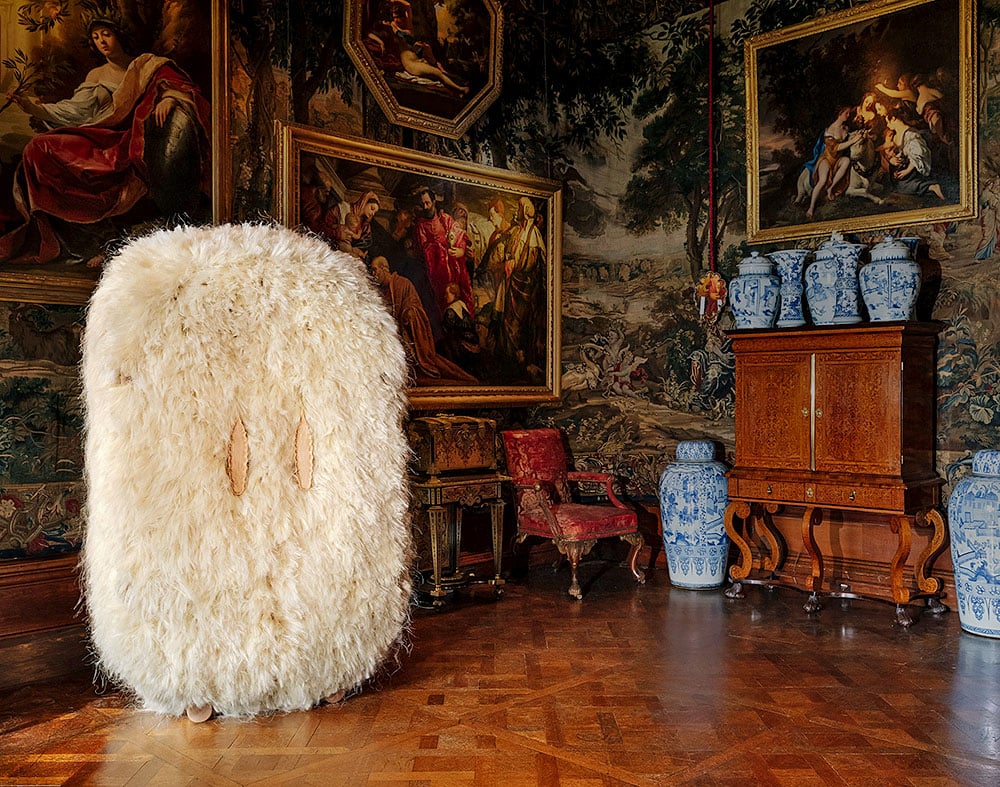
Fernando Laposse in “Mirror Mirror.” Courtesy of Chatsworth House.
Take us through some of the pairings.
We looked closely at Chatsworth’s different interiors—the furnishings and architectural details—and carefully chose existing pieces by designers that we felt would best lock into the scenarios on a primarily material level. Following certain thematics, we set out to illuminate both the pieces and the context by highlighting their similarities and differences. The house is impressive in that it’s not an inert historic situation being disrupted through a series of contemporary interventions, but rather the result of continuous creative re-imagining. It’s the first property of its kind to have become a visitable site, a model similar locales have adopted to remain viable.
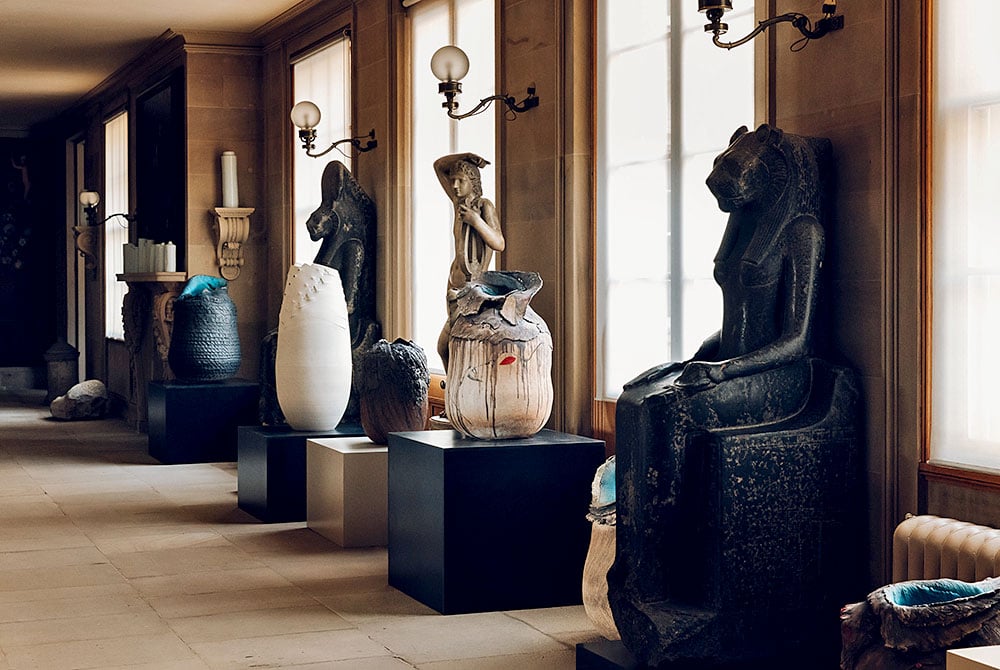
Andile Dyalvane in “Mirror Mirror.” Courtesy of Chatsworth House.
We placed South African ceramicist Andile Dyalvane’s abstract vessels—Cornish Waterfall (2019) and Ngxondorha (Volatile Rocky Terrain) (2021), among other works—in direct dialogue with British ceramics artist Edmund de Waal’s A Sounding Line installation. Their approaches differ but both have responded to the surroundings in different ways in their respective collections. Both also attest to historic American ceramicist Michael Leach as a source of inspiration. Exhibitor Ndidi Ekubia uses the same silversmithing handwriting and chasing techniques you would see in an 18th-century object at Chatsworth but in a manner that’s more contemporary and abstract. Max Lamb uses a bandsaw to cut up wooden fragments and reassemble them in the 6-by-8 chair, bench, and table series. He’s not implementing traditional wood carving techniques as you might find articulated throughout the house.
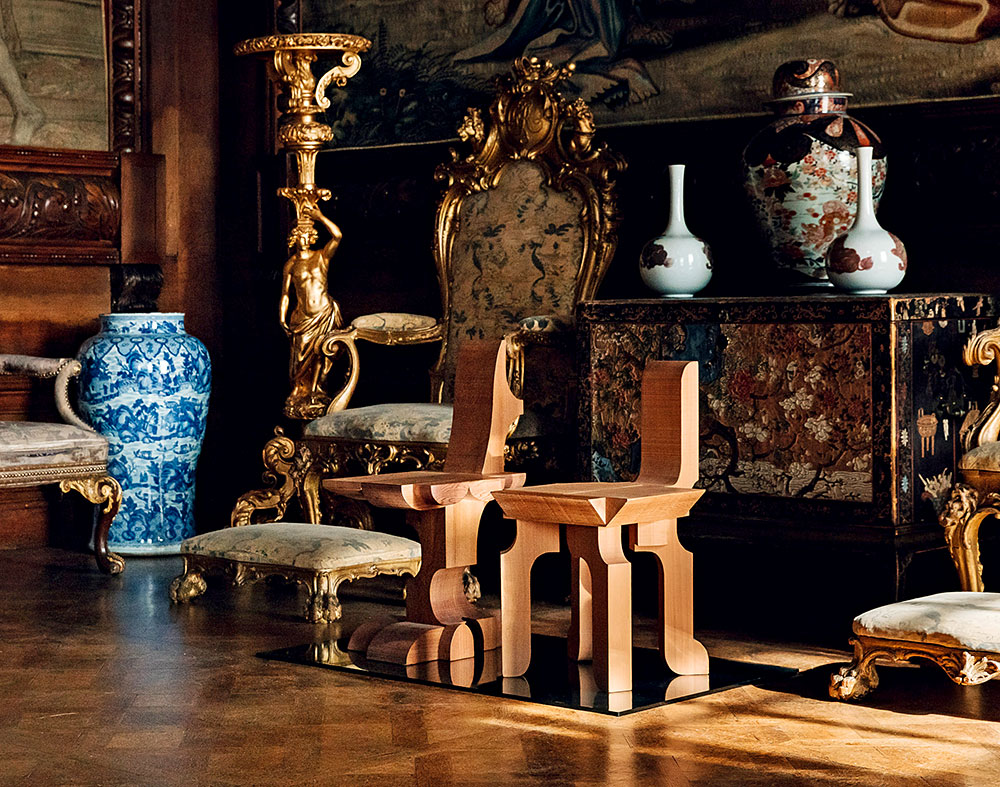
Max Lamb in “Mirror Mirror.” Courtesy of Chatsworth House.
What can the estate’s history as both a platform for art and design teach us about holistic collecting and patronage?
Very few people are in a position to do what the Cavendishes have done, partly because their house is so extraordinary. However, if you think about it on a smaller scale, it becomes much more about building a story in a continuous way. Even if it’s about shaping a space with fewer resources that might exist for a shorter period of time, you can still think of collecting as this kind of cumulative or additive practice, a stratigraphy if you will. Collecting isn’t always thought of in that way. For many, it’s about growing a collection in size rather than over time. Regardless, there’s been a shift in the past 20 years or more in how collectors view what I call avant garde design. I prefer this term to ‘collectible’ as it englobes a wider scope of work and research currently being conducted in Europe, Asia, and increasingly in the United States, if not also elsewhere.
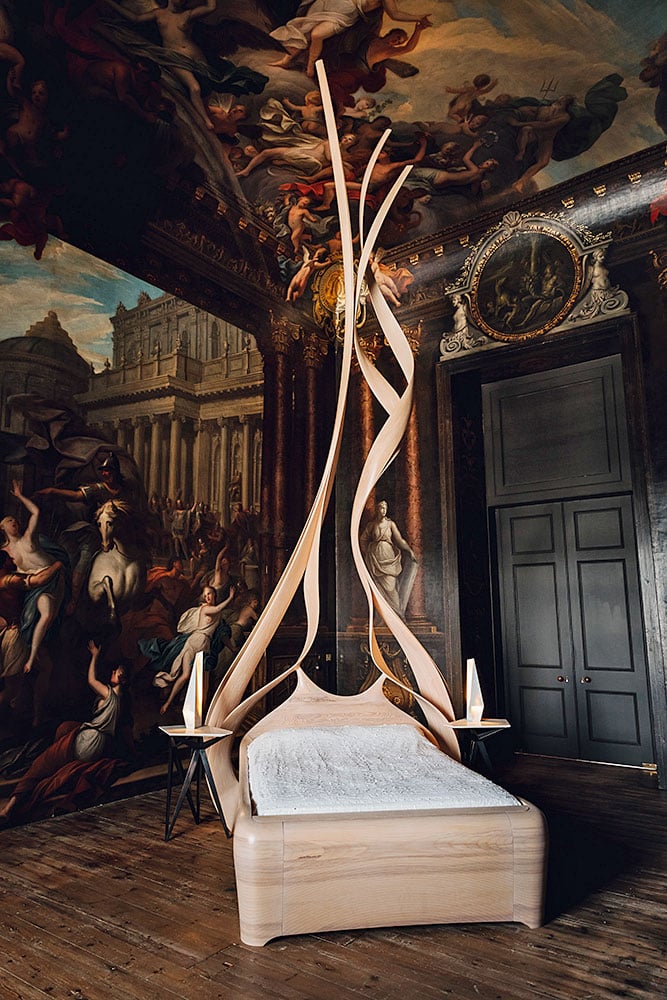
Joseph Walsh in “Mirror Mirror.” Courtesy of Chatsworth House.
There’s been a significant growth in this market that runs parallel to the acquisition of fine art. A lot of the people that were initially and maybe still collecting this kind of material have begun acknowledging that the rest of their domestic interior can attain the same rigor as their paintings and sculptures. They might have Gerhard Richter on the wall but pair it with a West Elm sofa. There’s nothing wrong with that brand but why not think about functional seating as being every bit as intellectually or visually challenging as the Richter? In its ability to transcend time, Chatsworth demonstrates this all-encompassing approach and to great effect. If you look at Chatsworth, the value of the handmade cannot be understated. It’s an amazing repository of craft works and craft history and so it serves as the perfect context to explore this focus.

Samuel Ross in “Mirror Mirror”. Courtesy of Chatsworth House.
How has craft continue to play a role in this evolution?
Craft is inextricably linked to the avant garde lineage that runs between the decorative arts, Radical Italian Design, Dutch design, work being done by Japanese talents like Shiro Kuramata, and more recent movements. The entire ecosystem centers on artisan knowledge, and material intelligence. Dyalvane, Ekubia, and Lamb are strong proponents of this impetus. Exhibitor Samuel Ross is also interesting because he’s able to work between what we might consider industrial and craft production. Presented in the home’s sculpture gallery, works like his Anxiety Birthed Corrosion table or Amnesia or Platelet Apparition lounger blend both more readily available industrial components and noble materials like marble. If there’s one place in the show where you feel like the conversation between the present and the past is its highest pitch, his work stands out. The pieces are also imbued with a significant amount of self reflection and expression. It’s important to mention that 20 years ago we might not have seen as much diversity represented in this market.
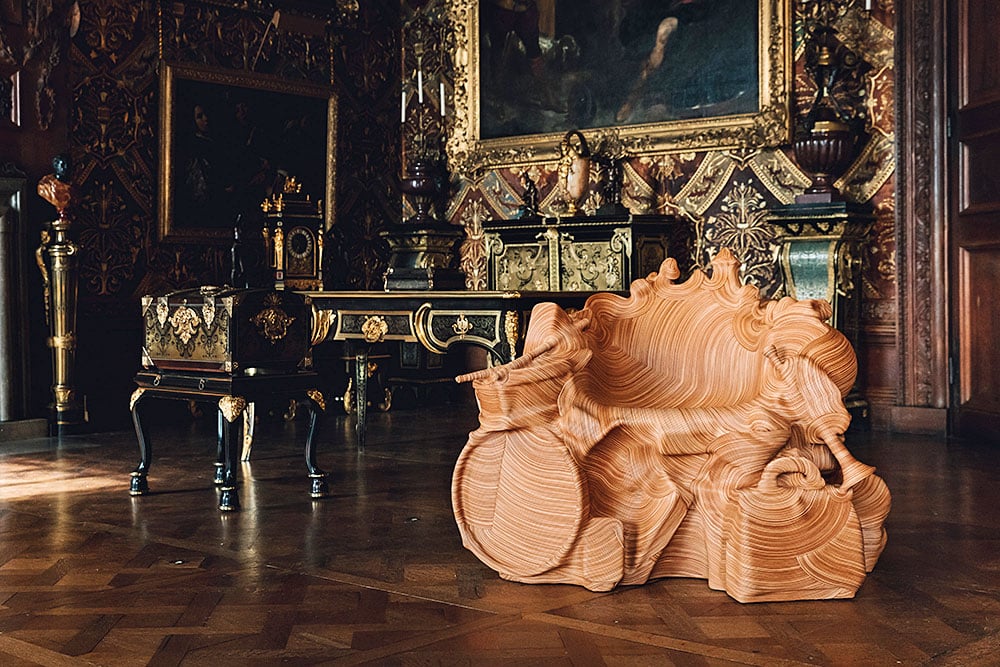
Jay Sae Jung Oh in “Mirror Mirror.” Courtesy of Chatsworth House.
If we look at where the scene is now and where it’s headed, there are two lines of inquiry that seem the most prevalent to me. On the one hand, there’s an increased interest in almost alchemical material research. Half of the designers in the “Mirror Mirror” center the practices on this preoccupation. For them it’s not necessarily about inventing new materials but inventing new ways of working with available matter and developing objects accordingly. Korean designer Jay Sae Jung Oh implements an analog cord wrapping technique but does so in such a manner that the seemingly mundane component becomes transformative in its application. It’s equally parts resourcefulness and imagination. Chris Schank does a great job of this as well by combining waste materials in singular, crystalline, almost geological forms using layers colored resin foil. On the other hand, there’s a growing desire to explore the spiritual resonance of objects. Both American designer Ini Archibong and British designer Faye Toogood are on this wavelength.
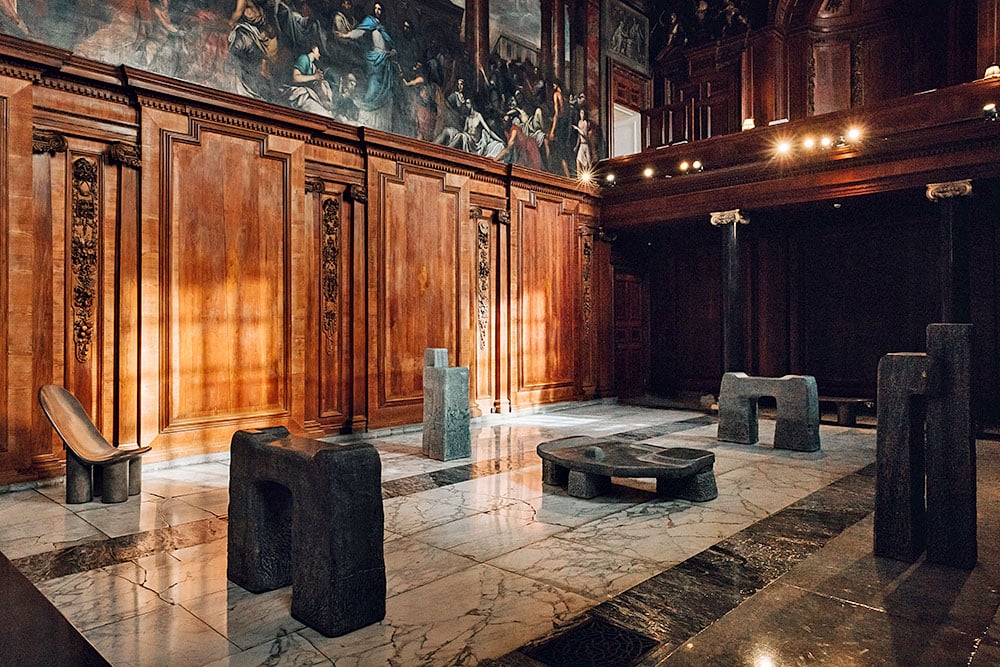
Faye Toogood in “Mirror Mirror.” Courtesy of Chatsworth House.
Shifting gears slightly, could you talk about your own collecting practice?
I live in a Hudson Valley house purpose-built by Postmodern ceramic artist duo Phillip Maberry and Scott Walker. Defined by larger boulders with poured concrete connecting them, the home is almost like a walk-in sculpture with colorful tiles throughout. It might not come as a surprise that what I mostly collect is also studio ceramics. The medium was my entry into the avant garde design scene and something I still cherish. I eat my breakfast out of Warren Mackenzie bowls. I also have a Jolie Ngo vessel that I received after helping her complete a thesis project at the Rhode Island School of Design. Her work is interesting because she’s one of the only digital native designers that I know of who is still implementing hand-building techniques all while looking to combine different approaches and materials.
More Trending Stories: